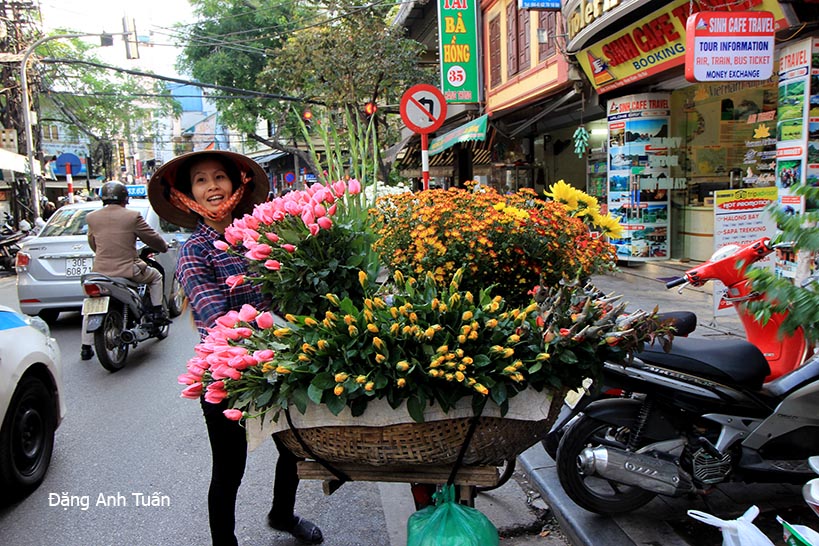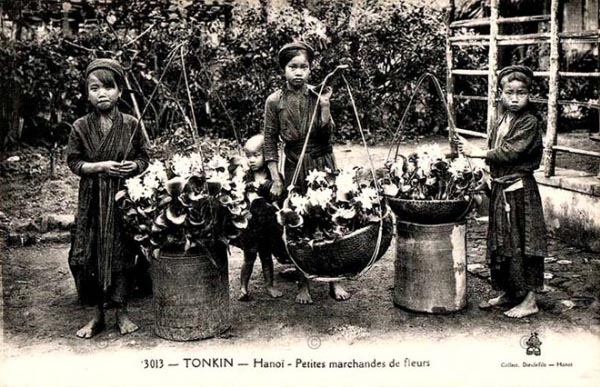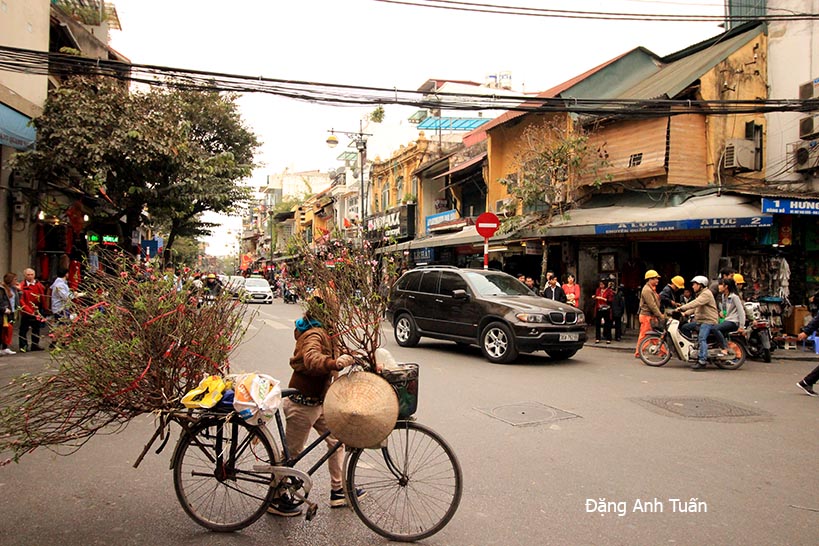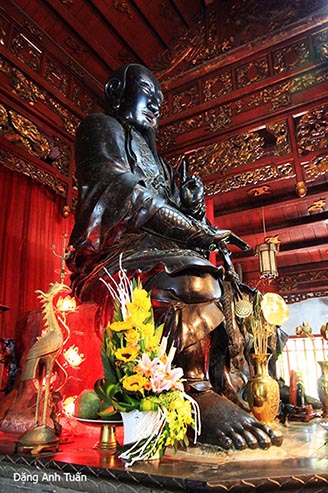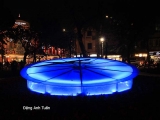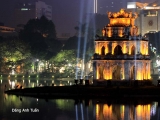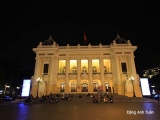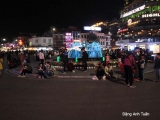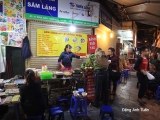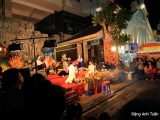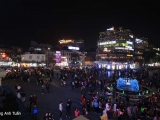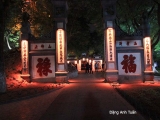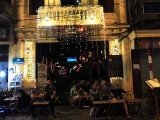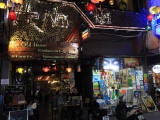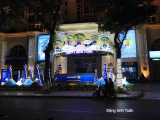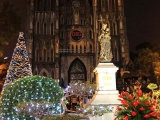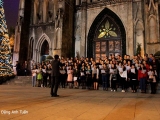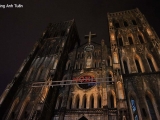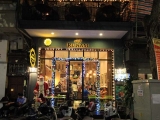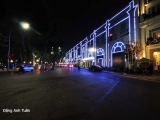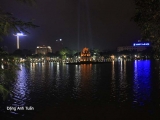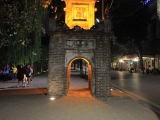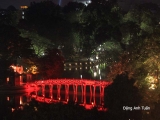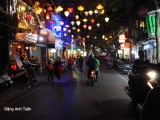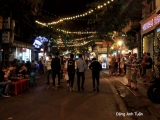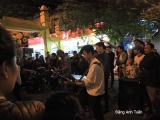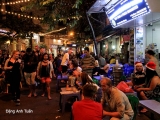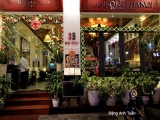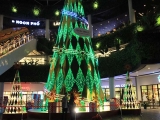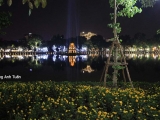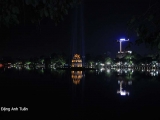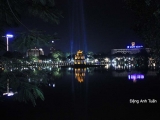Les marchandes ambulantes de Hanoï
Étant connues à l’époque coloniale, les marchandes ambulantes se font au fil des années une image d’une scène ordinaire et plutôt familière pour les Hanoiens dans leur vie journalière. Par contre pour les touristes étrangers et les passionnés de photos, elles constituent un attrait très original, une caractéristique particulière de la « culture du commerce ambulant » de Hanoï dont les photos ne peuvent pas être absentes dans un album de photos de voyage, en particulier avec les marchandes ambulantes de fleurs. Étant venues d’autres provinces ou vivant aux alentours de la capitale, celles-ci réveillées très tôt, à 4 ou 5 heures du matin, doivent accomplir des dizaines de kilomètres en vélo pour s’approvisionner en fleurs et fruits au marché. Puis elles cherchent des rues calmes et désertes pour mettre en valeur les produits proposés à vendre ( fleurs et fruits) tout en faisant appel à leur créativité et l’adresse de leurs mains dans la géniale exposition et la disposition superbement équilibrée de ces produits. Ceux-ci sont proposés en fonction de leur saison. On peut dire que ces femmes marchandes ambulantes sont des tableaux vivants animés et multicolores se faufilant au cœur du vieux quartier de la capitale.
Elles apportent tous les jours à la capitale un style de vie particulier sans qu’elles le sachent. Elles continuent à s’inquiéter de manière timorée tout en cherchant de loin la présence et le déplacement de la police locale à travers leurs yeux craintifs et apeurés. Cela fait mal à ces femmes qui doivent chercher de l’argent pour s’acquitter des obligations familiales et avoir la tranquillité dans l’âme mais cela crée aussi un souci majeur pour ceux qui aiment à faire des photos comme moi car je suis obligé de les poursuivre patiemment à travers les rues et les quartiers avec le but de pouvoir obtenir ces photos inoubliables ci-dessous que je pourrai partager sur le net. Il est très difficile d’avoir auprès de ces femmes courageuses un sourire matinal naturel avec cette vie assez tumultueuse.
Đã có từ đời Pháp thuộc, người bán hàng rong là một hình ảnh bình dị quá quen thuộc đối với người Hà Thành trong cuộc sống hằng ngày nhưng đối với những người du khách ngoại quốc hay là những người thích chụp ảnh thì người bán hàng rong là một nét đẹp quá độc đáo, một đặc trưng văn hoá bán hàng rong riêng tư của Hà Thành không thể thiếu sót để lưu niệm trong cuốn album được nhất là với những người bán hoa dạo. Các phụ nữ bán rong nầy họ là những người nhập cư từ phương xa đến, họ thức dậy lúc 4, 5 giờ sáng đạp xe hàng cây số để lấy hoa hay trái cây ở chợ rồi họ tìm những đường hay nơi vắng vẽ ít người để họ trang trí lại theo ý muốn, tăng thêm với đôi bàn tay khéo léo, cái vẻ đẹp của các món hàng thực phẩm họ bán, nhất là hoa quả. Họ bán theo mùa, muà nào thức ấy. Có thể nói họ là những bức tranh sống linh hoạt muôn màu di chuyển giữa lòng phố cổ.
Họ tạo ra hằng ngày một nét đẹp riêng tư cho Hà Thành mà chính họ không bao giờ biết nghỉ đến. Họ lúc nào cũng lo lắng rụt rè thăm dò từ đằng xa sự đeo đuổi của các chú cảnh sát phường xóm qua đôi mắt sợ sệt . Thật tội cho họ để kiếm tiền trang trải cuộc sống vất vã, không có lúc nào được yên tâm cả mà cũng tội cho những người thích chụp ảnh như tớ cũng bị lôi cuốn, chạy theo họ qua đường phố, phải kiên nhẫn để có thể được các tấm ảnh nầy để chia sẻ trên trang nầy nhất là hiếm có được ở nơi họ những nụ cười tự nhiên vui vẻ buổi sáng với cuộc sống bon chen nầy.
Being known at the colonial period, street women vendors get over the years, a picture of the ordinary scene and too familiar for people living in Hanoi. However, for foreign tourists and photo enthusiasts, they constitute an attraction very original, a particular characteristic of ambulant commerce in Hanoï. Their photos are not missing in an album of travel pictures, in particular with itinerant florists. Coming from other provinces or living around the capital and being up early around 4 or 5 in the morning, they must accomplish tens of kilometers on a bike for their supplies in flowers and fruits to the market. Then they seek refuge in quiet and desert streets in order to highlight the products to be sold (flowers and fruits) by calling upon the creativity and the manuel skill in the ingenious exhibition and the arrangement superbly balanced of these products proposed depending on their season. One can say these street vendors are animated and multicoloured living tableaux sneaking in the heart of old quarter of Hanoï. They provide every day to the capital a particular lifestyle without them knowing. They continue to worry in timid manner by seeking away the presence and displacement of local police with their fearful eyes. It hurts these women who must find money for paying off their family obligations and having peace in their soul but it also creates a major concern for those who love to take pictures like me because I am obliged to pursue them with patience through streets and quarters in order to obtain these unforgettable pictures below. It is difficult to have a morning natural smile from courageous women when they have a tumultuous life.

